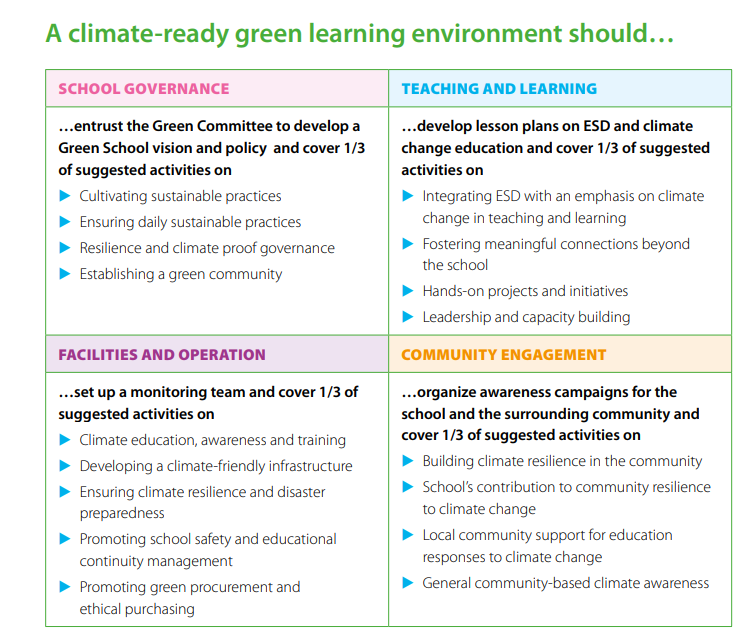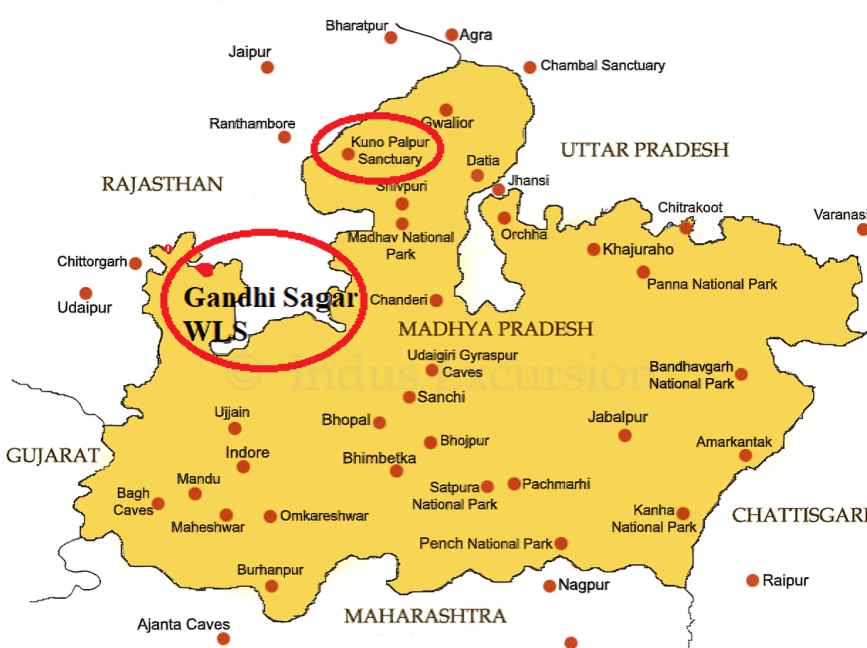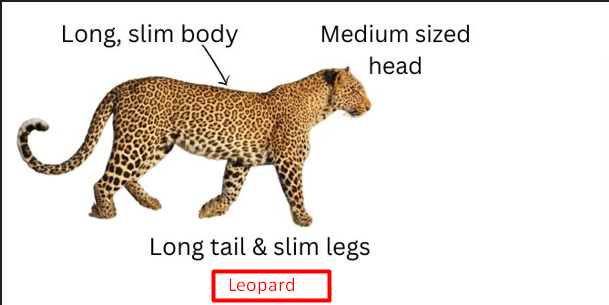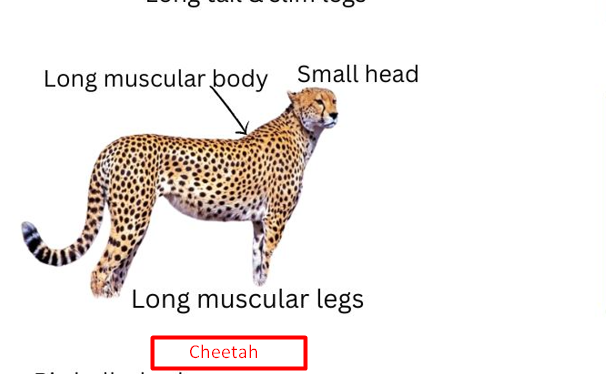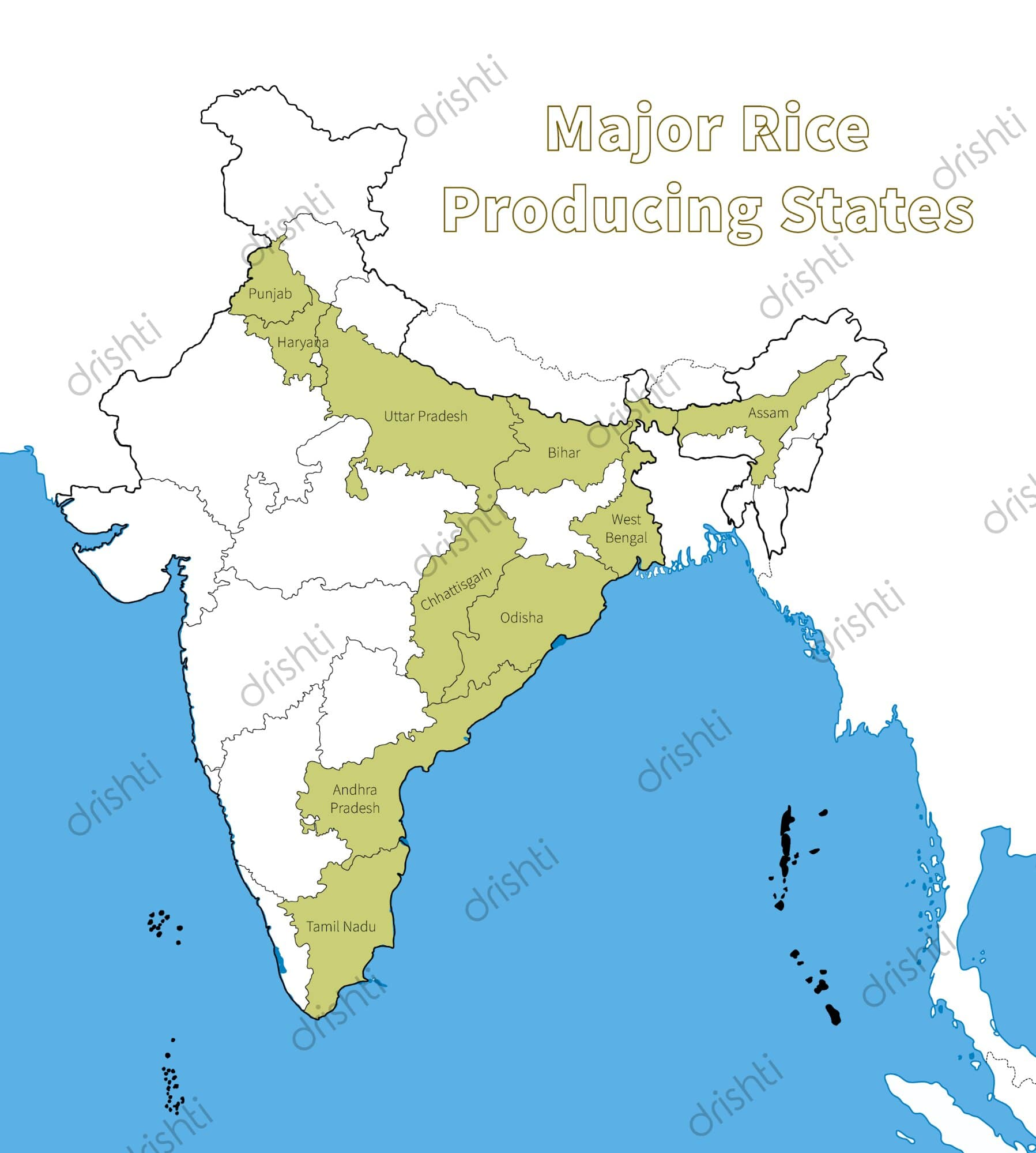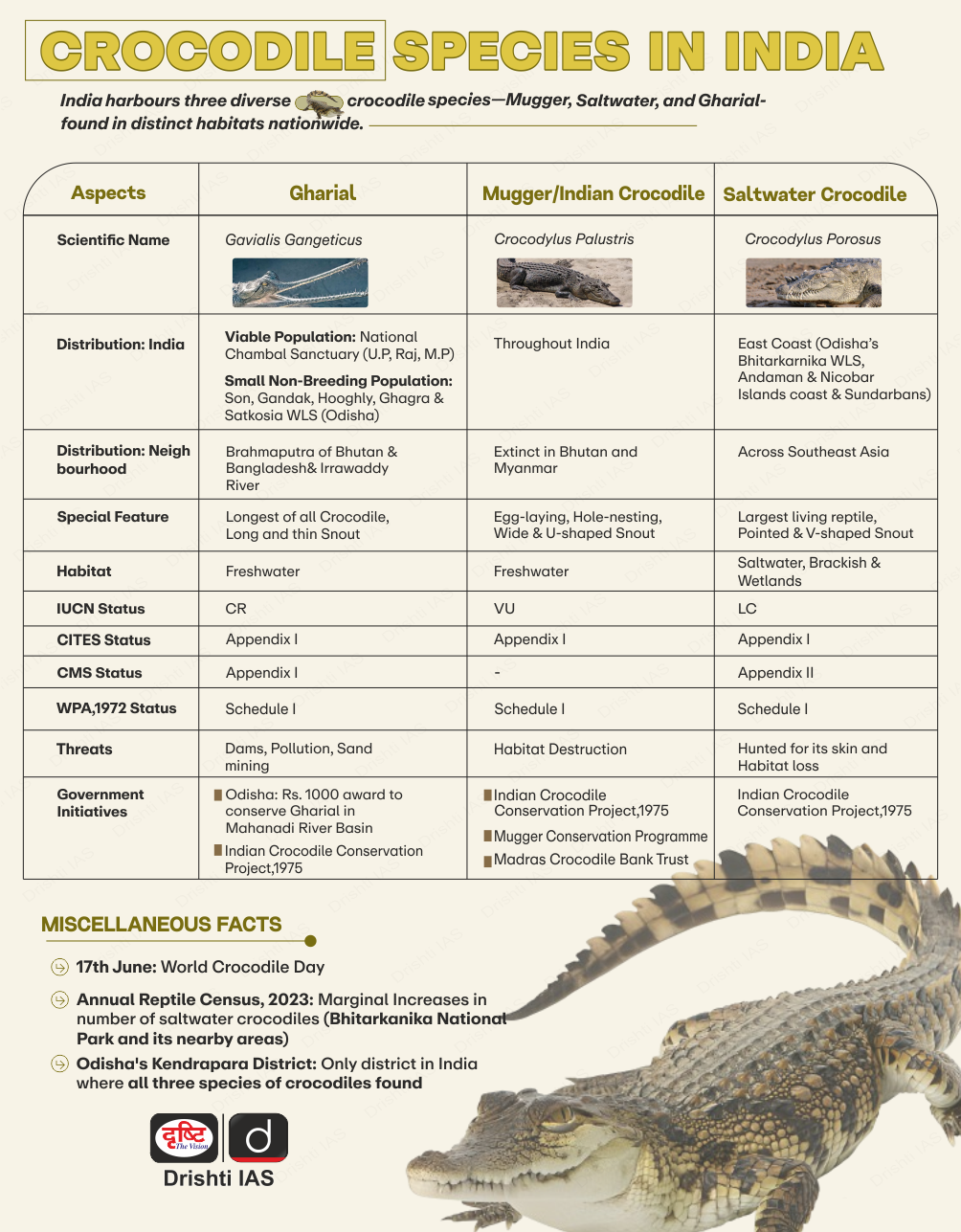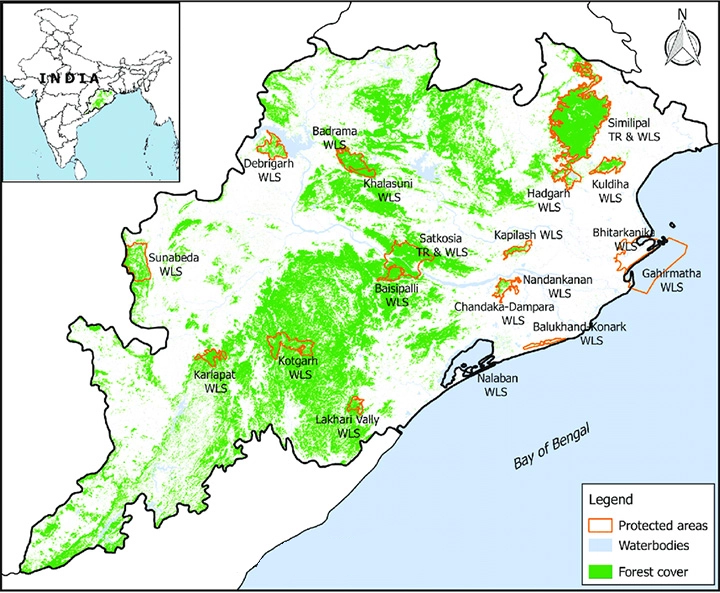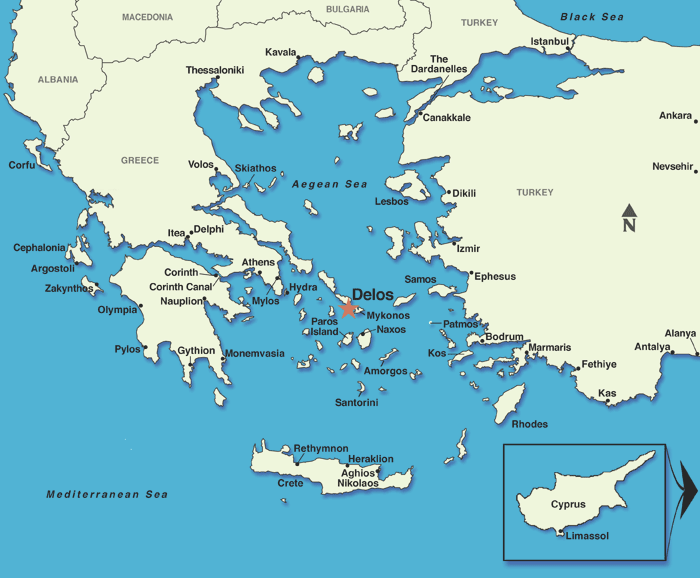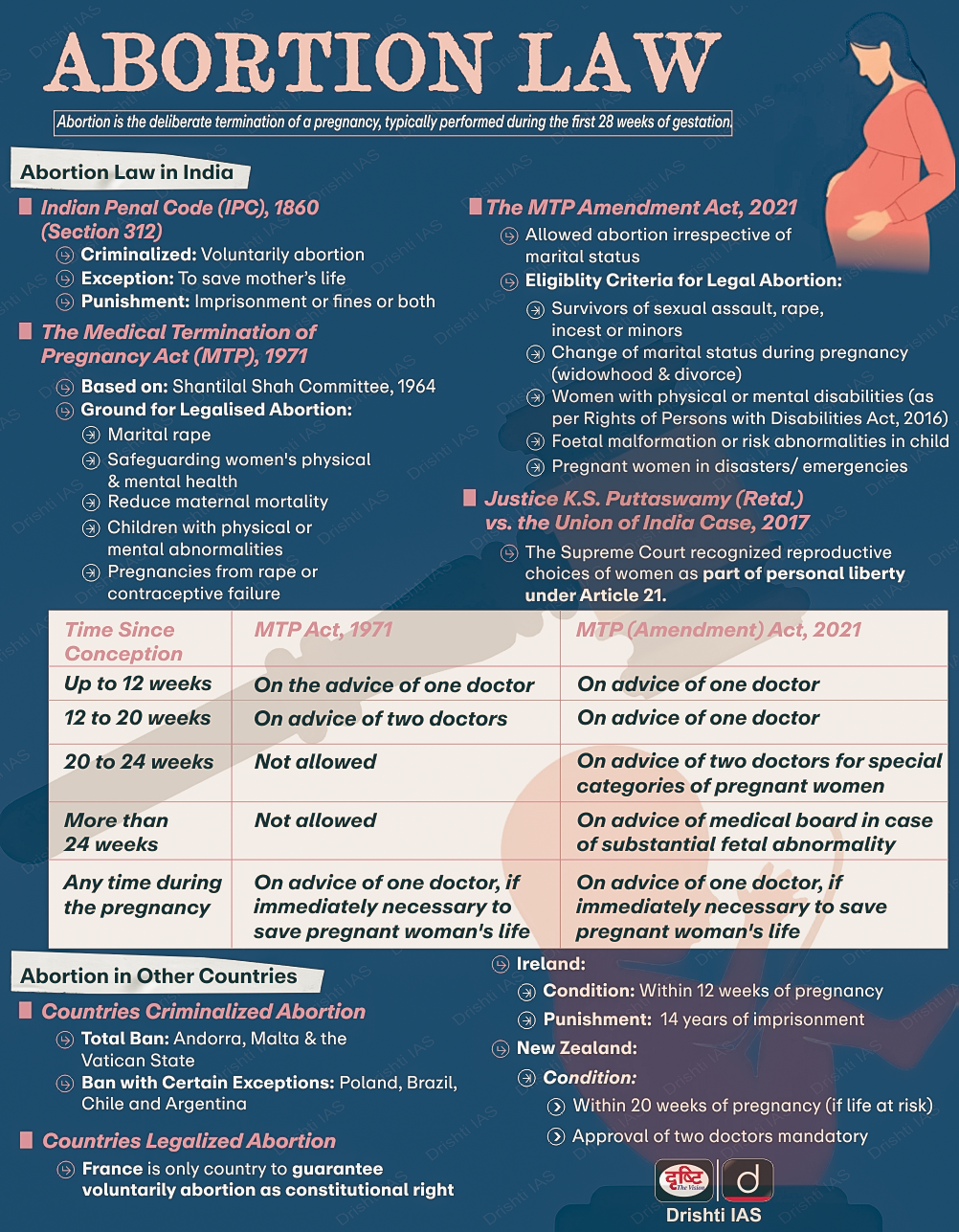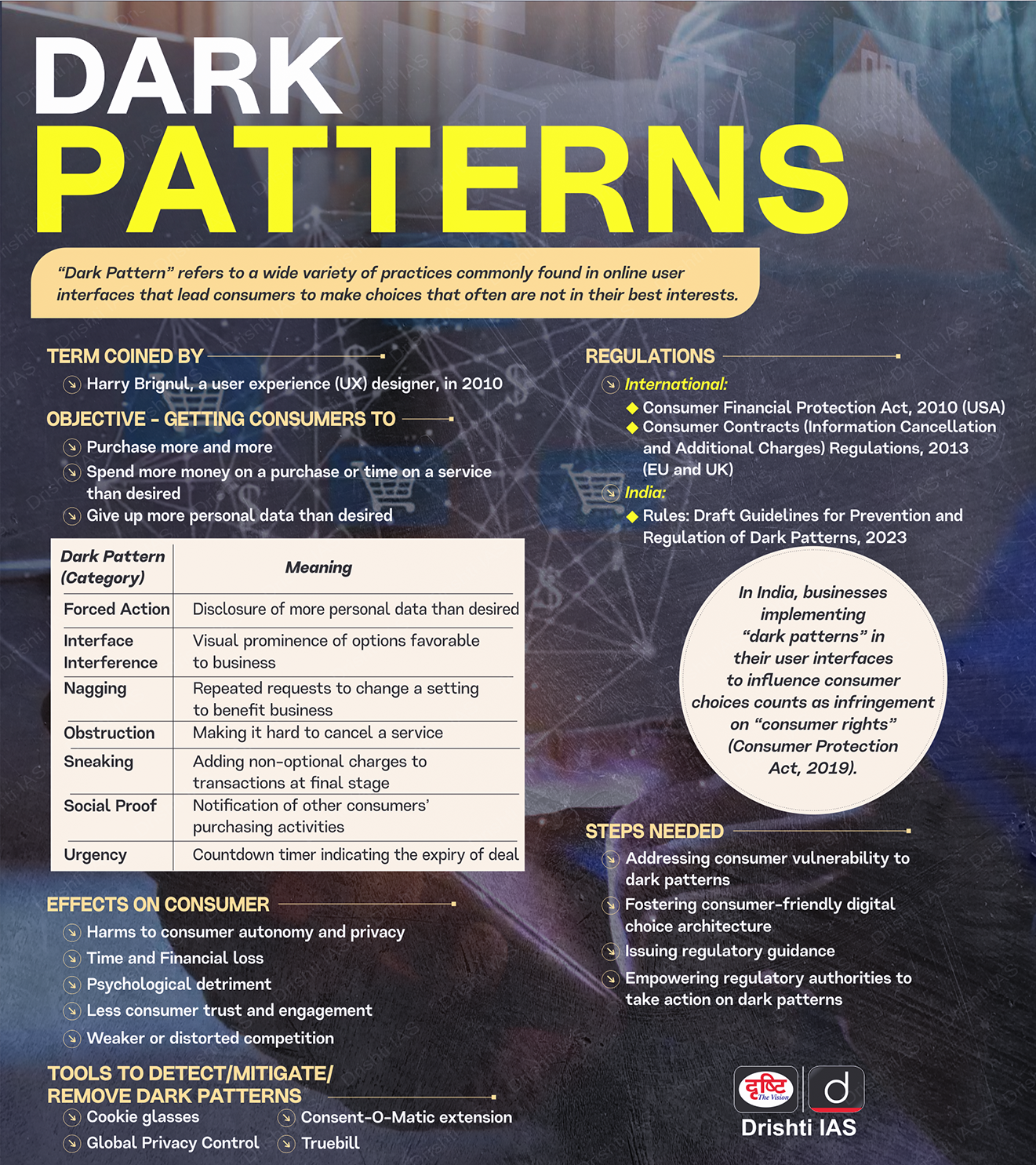Greening the Education Sector
For Prelims: UNESCO, National Education Policy 2020, Greening Education Partnership, Education for Sustainable Development, Comprehensive Safe School Framework (CSSF) 2022-2030, Global Alliance for Disaster Risk Reduction and Resilience in the Education Sector, Green Building Materials.
For Mains: Greening Education Partnership, Major Challenges in Greening the Education Sector in India.
Why in News?
Recently, UNESCO launched two new tools, the Greening Curriculum Guidance (GCG) and the Green School Quality Standards (GSQS) under the Greening Education Partnership.
What are UNESCO’s New Tools for Greening Education?
- Greening Curriculum Guidance (GCG):
- Purpose: Establishes a common understanding of climate education.
- Scope: Outlines how countries can integrate environmental topics into curricula.
- Learning Outcomes: Provides detailed learning outcomes for age groups from 5 years old to 18+.
- Teaching Methods: Emphasizes active learning and hands-on activities.
- Green School Quality Standard (GSQS):
- Objective: Sets minimum requirements for creating "green schools" with an action-oriented approach.
- Governance: Recommends establishing green governance committees including students, teachers, and parents to oversee sustainable management.
- Teacher Training: Calls for comprehensive training for teachers on environmental issues.
- Resource Audits: Advocates for conducting audits of energy, water, food, and waste within schools.
- Community Engagement: Encourages stronger ties with the wider community to help students address environmental issues at the local level.
What is the Greening Education Partnership?
- About: The Greening Education Partnership is a global initiative comprising 80 member states to take a whole-of-system approach to support countries to tackle the climate crisis by harnessing the critical role of education.
- It aims to transform at least 50% of schools, colleges, and universities into Green Schools by 2030, preparing learners to become climate-ready and active participants in sustainability initiatives
- It also aims to achieve green national curriculum in 90% countries by 2030.
- It aims to transform at least 50% of schools, colleges, and universities into Green Schools by 2030, preparing learners to become climate-ready and active participants in sustainability initiatives
- Pillars: It is structured around four key pillars of transformative education aligning with Sustainable Development Goal (SDG) Target 4.7
- Greening schools
- Greening curriculum
- Greening teacher training and education systems’ capacities
- Greening communities
- Need:
- 70% of the youth surveyed in a recent UNESCO study stated they had limited understanding about climate change based on what they had learned in school.
- UNESCO’s research on how climate change is integrated in the national curriculum frameworks of 100 countries revealed several challenges that need to be addressed.
- Almost 47% of the curricula examined did not feature climate change.
- Green School: According to UNESCO, a Green School is a learning institution committed to Education for Sustainable Development (ESD), with a specific focus on addressing climate change.
- Principles of a Green School:
- Holistic Education: Prioritizing holistic development by nurturing critical thinking, creativity, self-awareness, empathy, and ethical values in learners.
- It incorporates personalized and experiential learning, interdisciplinary approaches, and community engagement to address climate change challenges effectively.
- Sustainability Practices: Green Schools implement sustainable practices in areas such as energy, water use, waste management, canteen and building and school yard design thus reducing greenhouse gas emissions and environmental impact, ensuring the health and well-being of learners and staff.
- Sense of Responsibility: Integrating Education for Sustainable Development (ESD) into the curriculum to develop critical thinking, problem-solving skills, and global citizenship among learners.
- Holistic Education: Prioritizing holistic development by nurturing critical thinking, creativity, self-awareness, empathy, and ethical values in learners.
- Alignment with Comprehensive School Safety Framework (CSSF): The Green school quality standard aligns with CSSF to integrate safety, resilience, and sustainability principles within educational settings.
- The Global Alliance for Disaster Risk Reduction and Resilience in the Education Sector (GADRRRES) launched the Comprehensive Safe School Framework (CSSF) 2022-2030 on 12th September 2022.
- Principles of a Green School:
Note
The National Education Policy 2020 underscores the importance of making environmental education an integral part of school curricula at all stages.
What are the Major Challenges in Greening the Education Sector in India?
- Lack of Comprehensive Sustainability Policies: While there have been some initiatives to promote sustainability in education, India lacks a comprehensive national policy framework that mandates and guides the integration of environmental sustainability principles across all levels of education.
- Infrastructure Deficiencies: Many educational institutions in India, particularly in rural and semi-urban areas, lack basic infrastructure facilities, making it challenging to implement sustainable practices.
- Limited Integration of Sustainability in Curricula: While environmental studies are part of the curriculum in many Indian schools and colleges, the integration of broader sustainability concepts and practices into mainstream disciplines remains limited.
- Inadequate Teacher Training and Professional Development: Effective integration of sustainability education requires teachers to be well-versed in the principles, pedagogies, and practical applications of environmental sustainability.
- However, many teacher education programs lack comprehensive training modules or resources to equip educators with the necessary knowledge and skills.
- Limited Availability of Green Building Materials and Technologies: India's construction industry is still in the process of transitioning towards sustainable building materials and technologies.
- The limited availability and higher costs of green building materials, renewable energy systems, and water-efficient fixtures can impede the adoption of sustainable practices in educational institutions, particularly in remote and rural areas.
Way Forward
- Eco-Influencer Campaigns: Leveraging the power of social media influencers and student leaders to promote sustainability awareness and inspire eco-friendly behaviours through engaging content, and campaigns that resonate with the student community.
- Green Pedagogy Workshops Organizing workshops and training programs for educators to learn about effective pedagogical approaches for integrating sustainability concepts into their teaching methods.
- Explore innovative techniques such as project-based learning, inquiry-based learning, and experiential learning to make sustainability education more engaging and impactful.
- Sustainability-Linked Procurement Policy: Schools can be encouraged to deploy energy-efficient appliances and for promoting eco-friendly purchases among students, like notebooks made from recycled paper.
- This reduces environmental impact, teaches students about responsible choices, and might even lead to cost savings in the long run.
- However, challenges like supplier availability in rural areas need to be addressed for successful implementation.
- Environmental Entrepreneurship Competitions: Conduct environmental entrepreneurship competitions where students develop innovative solutions to local environmental challenges.
- This fosters creativity, problem-solving skills, and a spirit of green innovation.
|
Drishti Mains Question: Examine the significance of greening the education sector in promoting sustainability. What measures can be adopted to effectively implement this in India? |
UPSC Civil Services Examination, Previous Year Question (PYQ)
Mains
Q1. How have digital initiatives in India contributed to the functioning of the education system in the country? Elaborate on your answer. (2020)
Q2. Discuss the main objectives of Population Education and point out the measures to achieve them in India in detail. (2021)
Controversies Surrounding UAPA
For Prelims: Unlawful Activities (Prevention) Act, 1967, Code of Criminal Procedure (CrPC), Indian Penal Code (IPC)
For Mains: UAPA: Related Judgments, Concerns, Way Forward
Why in News?
Recently, the Delhi Lieutenant Governor (LG) approved the prosecution of novelist Arundhati Roy for supposedly making provocative statements at a 2010 event that advocated Kashmiri separatism. This approval was granted under Section 13 of the Unlawful Activities (Prevention) Act, of 1967.
- In 2023, the author was charged under several sections of the Indian Penal Code (IPC).
Note: Section 13 of the UAPA deals with advocating, abetting or inciting any unlawful activity and is punishable with imprisonment for up to seven years.
What is the Unlawful Activities (Prevention) Act (UAPA)?
- Background:
- On 17th June 1966, the President promulgated the Unlawful Activities (Prevention) Ordinance “to provide for the more effective prevention of unlawful activities of individuals and associations”.
- Subsequently, the Unlawful Activities (Prevention) Act of 1967 was enacted.
- On 17th June 1966, the President promulgated the Unlawful Activities (Prevention) Ordinance “to provide for the more effective prevention of unlawful activities of individuals and associations”.
- About:
- The Unlawful Activities (Prevention) Act, 1967 was enacted to provide for more effective prevention of certain unlawful activities of individuals and associations, for dealing with terrorist activities, and for matters connected therewith.
- Unlawful activities are defined as actions supporting or inciting the cession or secession of any part of India, or actions questioning or disrespecting its sovereignty and territorial integrity.
- The National Investigation Agency (NIA) is empowered by the UAPA to investigate and prosecute cases nationwide.
- The Act also empowers the Director-General, the National Investigation Agency (NIA) to grant approval of the seizure or attachment of property when the case is being investigated by the agency.
- The Unlawful Activities (Prevention) Act, 1967 was enacted to provide for more effective prevention of certain unlawful activities of individuals and associations, for dealing with terrorist activities, and for matters connected therewith.
- Amendments:
- It underwent multiple amendments (2004, 2008, 2012 and 2019) expanding provisions related to terrorist financing, cyber-terrorism, individual designation as terrorist, and property seizure.
- Major Provisions:
- Till the year 2004, “unlawful" activities referred to actions related to secession and cession of territory. Following the 2004 amendment, “terrorist act" was added to the list of offences.
- 2019 amendment, empowers the government to designate individuals as terrorists.
- The Act gives the central government complete authority to declare any activity as unlawful. If the government considers an activity unlawful, it can officially declare it so by publishing a notice in the Official Gazette.
- Under the UAPA, the investigating agency can file a charge sheet in maximum 180 days after the arrests and the duration can be extended further after intimating the court.
- Both Indian and foreign nationals can be charged. It will be applicable to the offenders in the same manner, even if crime is committed on a foreign land, outside India.
- It has the death penalty and life imprisonment as highest punishments.
- Till the year 2004, “unlawful" activities referred to actions related to secession and cession of territory. Following the 2004 amendment, “terrorist act" was added to the list of offences.
- Related Judgments:
- In Arup Bhuyan vs State Of Assam, 2011 the Supreme Court ruled that mere membership of a banned organisation will not incriminate a person. It can be done if a person resorts to violence or incites people to violence or does an act intended to create disorder.
- However, in 2023 the Supreme Court ruled that membership alone in such organisations can be considered an offense even without the presence of overt violence.
- In the People’s Union for Civil Liberties v. Union of India, 2004, the Court decreed that if human rights are violated in combating terrorism, it will be self-defeating.
- The court held that a former police officer is not a good choice to be appointed as a member of the National Human Rights Commission (NHRC) as their experience is more related to investigating crimes rather than protecting and promoting human rights.
- In the Mazdoor Kisan Shakti Sangathan v. Union of India, 2018, the Court said that protests against governmental and parliamentary actions are legitimate, although such protests and assemblies are supposed to be peaceful and non-violent.
- In the case of Hussain and Anr. v/s Union of India, 2017, the focus was on expediting the processing of bail applications, with an emphasis on the idea that bail should be the standard and imprisonment the rare exception.
- In NIA v. Zahoor Ahmad Shah Watali, 2019, the Supreme Court emphasised that courts should not delve deeply into the evidence but rather trust the state's case as presented when making decisions on bail applications related to the UAPA.
- In Arup Bhuyan vs State Of Assam, 2011 the Supreme Court ruled that mere membership of a banned organisation will not incriminate a person. It can be done if a person resorts to violence or incites people to violence or does an act intended to create disorder.
What are the Concerns Related to UAPA?
- Low Conviction Rate: According to NCRB data, a significant number of UAPA cases remain pending, with a low conviction rate.
- Only 18% of UAPA cases result in convictions, and the pendency rate in trials is 89%.
- Subjective Interpretation: The vague definition of unlawful activities allows for subjective interpretations, making it vulnerable to potential misuse against specific groups or individuals based on their identity or ideology.
- Limited Judicial Review: The 2019 amendment empowers the government to designate individuals as terrorists without any judicial review, raising concerns about due process of law and the potential for arbitrary designations.
- Detention Rules: The UAPA has a provision that allows for individuals to be detained for up to 6 months without being charged. This is in stark contrast to regular criminal law, which only allows for a 3 month pre-charge detention period before bail can be sought.
- Violation of Fundamental Rights: The law infringes upon the essential rights of free speech, assembly, and association protected by the Constitution.
- It makes it illegal to express disagreement and protest and can be employed to single out advocates, reporters, students, and marginalised communities who speak out against the authorities.
Way Forward
- Use the Law as the Last Resort: Ensure that the UAPA law is used only as a last resort and not as a first response to deal with security threats or social unrest.
- The UAPA law should not be used to suppress legitimate dissent, criticism, or opposition, or to harass, intimidate, or silence civil society actors, journalists, academics, or human rights defenders.
- The government should respect and protect the fundamental rights and freedoms of all citizens, and use dialogue, negotiation, and reconciliation as the preferred means to resolve conflicts and grievances.
- Need for Amendment: There is a need to refine the definition of "unlawful activity" and "terrorist act" to specifically exclude constitutionally protected activities like peaceful protests, differing viewpoints, and ideological expressions.
- The existing definitions are overly ambiguous, wide-ranging, and open to interpretation, allowing the government to potentially criminalize any action it finds objectionable or menacing.
- Dissent is a crucial aspect of the freedom of speech as outlined in Article 19(1)(a) as established in the case of Maqbool Fida Hussain v. Rajkumar Pandey, 2008.
- Non-Biased Review Mechanism: Create a system for reviewing government decisions to ban or label certain groups or individuals as unlawful or terrorist. This system should be independent and impartial, allowing for monitoring and challenging of the government's actions.
- The current system is not sufficient, as the government is not required to justify its decisions or provide evidence, and the review tribunal is often influenced by the government.
- Presumption of Innocence: Section 43D(5) of the act could be amended to explicitly emphasize the presumption of innocence until proven guilty.
- This would ensure that the prosecution bears the burden of proof throughout the bail procedure and the accused is not required to establish their innocence.
- Clearer Grounds for Denial of Bail: The provision could be changed to establish specific and well-defined grounds for denying bail.
- This would prevent bail from being denied arbitrarily and provide clarity to the courts and the accused regarding the situations in which bail can be denied.
Conclusion
In the mentioned issue, it is doubtful whether a mere speech, without a specific call to violence, would be considered "unlawful activity" under the UAPA. The implication is that the mere expression of views or opinions about the status of Kashmir, even if they are controversial or critical, may not necessarily constitute a violation of the UAPA, which is typically intended to address more direct incitements to unlawful action.
|
Drishti Mains Question Q. What are the key provisions of the Unlawful Activities (Prevention) Act (UAPA), and how have these provisions impacted the balance between national security and civil liberties? |
UPSC Civil Services Examination, Previous Year Question (PYQ)
Mains
Q. The Indian government has recently strengthened the anti-terrorism laws by amending the Unlawful Activities(Prevention) Act, (UAPA), 1967 and the NIA Act. Analyze the changes in the context of the prevailing security environment while discussing scope and reasons for opposing the UAPA by human rights organizations. (2019)
Cheetahs in Gandhi Sagar Wildlife Sanctuary
For Prelims: Cheetah Reintroduction Plan, Kuno-Palpur National Park (KNP), CITES, Project Cheetah, Gandhi Sagar Wildlife Sanctuary.
For Mains: Challenges Associated with the Translocation of Cheetah in India, Importance of Biodiversity, Genetic, Species, Ecosystem.
Why in News?
Recently, the Madhya Pradesh Government has informed that it has completed its preparations for the reintroduction of the cheetahs from Africa in the Gandhi Sagar Wildlife Sanctuary (GSWS).
- It will be the second home for cheetahs in India, after the Kuno National Park (KNP).
Project Cheetah
- Phase-1 of the project started in 2022, to restore the population of cheetahs, which were declared extinct in the country in 1952.
- It involves the translocation of cheetahs from South Africa and Namibia to Kuno National Park.
- The project is implemented by the NTCA in collaboration with the Madhya Pradesh Forest Department, and Wildlife Institute of India (WII).
- Under Phase-2 of the Project India is considering sourcing cheetahs from Kenya due to similar habitats.
- Cheetahs will be translocated to Kuno National Park and Gandhi Sagar Wildlife Sanctuary (Madhya Pradesh).
What are Key Facts About Gandhi Sagar Wildlife Sanctuary?
- Location:
- Notified in 1974, encompassing the districts of Mandsaur and Neemuch in western Madhya Pradesh, bordering Rajasthan.
- The Chambal River bifurcates the sanctuary into two nearly equal parts, with the Gandhi Sagar Dam situated within the sanctuary.
- Ecosystem:
- Its ecosystem is characterised by its rocky terrain and shallow topsoil, which supports a savanna ecosystem.
- This comprises open grasslands interspersed with dry deciduous trees and shrubs. Additionally, the riverine valleys within the sanctuary are evergreen.
- Ideal Habitat for Cheetahs:
- The sanctuary's resemblance to the Maasai Mara, a renowned national reserve in Kenya known for its savanna wilderness and abundant wildlife, highlights its suitability for cheetahs.
Some Facts about Cheetahs
- Breeding and Maturity: Cheetahs breed throughout the year, with a peak during the rainy season. Females reach sexual maturity at 20-24 months, while males mature later at 24-30 months.
- Gestation and Litters: The gestation period lasts about 90-95 days, with typical litters consisting of 3-5 cubs.
- Vocalizations: Unlike other big cats like lions and tigers, cheetahs do not roar. They communicate through various vocalisations, including high-pitched chirps or barks.
- Territorial Behaviour:
- Cheetahs are generally solitary and use multiple methods to mark their territories, such as scratch marks on trees or rocks and scent marking by spraying urine or rubbing their cheeks on objects.
- They also use vocalisations like the "stutter bark" to warn other cheetahs of their presence and establish territory.
- Speed and Hunting:
- Cheetahs are the fastest land animals, capable of reaching speeds up to 120 km/h in short bursts and can accelerate from 0 to 100 km/h in just 3 seconds.
- They use a unique adaptation called "tripping" with their semi-retractable claws to trip their prey.
- Despite their speed, their hunting success rate is only about 40-50%.
- Protection Status of Cheetah:
- Vulnerable in IUCN Red List
- Schedule 2 of the Wild Life (Protection) Act, 1972.
- Appendix I of CITES.
What are the Challenges in Making Gandhi Sagar a Viable Cheetah Habitat?
- Insufficient Prey Base: Current prey numbers (chital, blackbuck, chinkara) are insufficient for cheetahs. Increasing the number of prey animals for cheetahs to hunt is crucial for their sustainable survival.
- A population of about 350 ungulates are required for a single cheetah coalition family. Ungulates are members of a diverse clade of animals, primarily big mammals with hooves (like deer).
- The leopard in GSWS could pose a threat to cheetahs through competition for the same prey.
- Change of Habitat: Cheetahs relocated from Kenya to India might grow thicker fur for the African winter, which isn't needed in India's climate.
- This can cause discomfort and make it harder for them to adjust until they adapt to the new environment.
- Proximity to Human Habitation: Unlike Kuno, Gandhi Sagar has highways and human settlements located right outside the protected area boundary, which could present challenges.
- Vulnerability to Infection: The final decision on cheetah translocation will be made after the monsoon season, as the cats may be vulnerable to infections during this time.
Kuno National Park
- It is located in Madhya Pradesh.
- It was initially established as a wildlife sanctuary in 1981.
- It was later designated as a national park in 2018.
- It is situated within the Khathiar-Gir dry deciduous forests.
|
Drishti Mains Question: Discuss the challenges and implications of the reintroduction of cheetahs in India. How does this initiative impact biodiversity conservation and ecosystem balance? |
UPSC Civil Services Examination Previous Year Question (PYQ)
Prelims
Q. Consider the following: (2012)
- Black-necked crane
- Cheetah
- Flying squirrel
- Snow leopard
Which of the above are naturally found in India?
(a) 1, 2 and 3 only
(b) 1, 3 and 4 only
(c) 2 and 4 only
(d) 1, 2, 3 and 4
Ans: (b)
Direct Seeding of Rice
For Prelims: Direct Seeded Rice (DSR), Water stress, Groundwater
For Mains: Benefits and issues of Direct Seeded Rice method of rice implantation
Why in News?
The Government of Punjab is actively promoting the Direct Seeding of Rice (DSR) also called the ‘tar-wattar’ technique of rice cultivation, which promises a multitude of advantages over traditional transplanting.
- However, the adoption of DSR in Punjab has been slow, with only 1.73 lakh acres (out of 79 lakh acres under paddy cultivation) using this technique in 2023.
What is Direct Seeding of Rice (DSR)?
- Transplantation Technique of Rice:
- In this technique, farmers prepare nurseries where seeds are first sown.
- After 25-35 days, the young seedlings are uprooted and replanted, in the main field.
- This method is labour and water-intensive, it is known to maximise yields and maintain better crop health. It requires around 25-27 irrigations in total.
- Direct Seeding of Rice (DRS):
- There is no nursery preparation or transplantation involved in this method.
- In DSR, the pre-germinated seeds are directly drilled into the field roughly 20-30 days prior to when they would have been transplanted by a tractor-powered machine.
- The field is irrigated and levelled prior to the seeding process which is carried out using a seed drill or lucky seeder.
- Before sowing seeds are treated by soaking in a fungicide solution.
- The first irrigation is carried out 21 days after sowing.
- Soil Characteristics for Successful DSR:
-
Soil Texture: It is more suitable for heavy or medium-to-heavy-textured soils as they have high water retention capacity due to the presence of high clay and less sand content.
- Only 20% of Punjab’s soil is light-textured.
- Iron Content in the Soil: Soils should be rich in plant-available iron and have minimal weed pressure for optimal DSR.
- Iron deficiency may require crop transplantation after a month, which negates the labour-saving benefits of DSR.
- Use ferrous iron (green-coloured, non-oxidized) as a supplement if needed, instead of oxidized iron (brown-coloured).
-
What are the Benefits of the DSR Technique?
- Reduced Water Usage:
-
The DSR technique can reduce water usage by 15-20% compared to the traditional puddling method, which requires 3,600 to 4,125 litres of water per kg of rice.
- With DSR, 15-18 irrigation rounds are required against 25 to 27 irrigation rounds in traditional methods.
-
- Lower Labour Requirements:
-
It requires less labour compared to the traditional transplantation method, where paddy seedlings have to be uprooted and replanted in the main field.
-
-
Earlier Maturity:
-
Crops grown using the DSR technique mature 7-10 days faster than those grown using the traditional method. This gives farmers more time to manage the paddy straw.
-
-
Improved Soil Health:
- The DSR technique involves less disturbance to the soil, which can help maintain soil health and fertility, unlike the traditional method that involves extensive ploughing and puddling.
- Reduced Greenhouse Gas Emissions:
- Puddling involves saturating the soil with water and then mechanically breaking it down through techniques like ploughing or harrowing.
- The traditional transplantation method involves puddling of the soil, which leads to the release of methane, a potent greenhouse gas.
- The DSR technique does not require puddling, thus reducing methane emissions.
- Puddling involves saturating the soil with water and then mechanically breaking it down through techniques like ploughing or harrowing.
Rice
- Rice is a staple food for most of the population in India.
- It is a kharif crop that requires high temperature (above 25°C) and high humidity with annual rainfall above 100 cm.
- In areas of less rainfall, it is grown with the help of irrigation.
- In southern states and West Bengal, the climatic conditions allow the cultivation of two or three crops of rice in an agricultural year.
- In West Bengal farmers grow three crops of rice called ‘aus’, ‘aman’ and ‘boro’.
- About one-fourth of the total cropped area in India is under rice cultivation.
- Leading producer states: West Bengal, Uttar Pradesh, and Punjab.
- High Yielding States: Punjab, Tamil Nadu, Haryana, Andhra Pradesh, Telangana, West Bengal and Kerala.
- India is the second-largest producer of rice after China.
What are the Challenges Associated with DSR Technique?
- Subsidised Electricity: A major reason Punjab farmers hesitate to adopt DSR is the availability of subsidised or free electricity, which reduces the incentive to switch to water-saving techniques like DSR.
- Weed Growth: In conventional methods, saplings are taller than weeds from the start, while in DSR, both plants and weeds grow simultaneously, which causes issues in harvesting and increase in the cost of weed removal using manpower
- Lack of Awareness: There is insufficient awareness and guidance on the benefits of DSR. Farmers are uncertain about yields from DSR, as results vary based on soil types, leading to confusion.
- Cost: The high cost of DSR machines is a significant barrier, especially for small and marginal farmers.
- Additionally, the adoption of DSR could negatively impact skilled migrant labourers from Eastern UP and Bihar who rely on traditional paddy transplanting for employment.
Conclusion
The central government should assist state governments in promoting this approach by conducting training sessions and raising awareness. Farmer Sakhi or Kisan Mitra can help in information dissemination regarding DSR. State governments are offering subsidies on DSR Seeder machines and financial incentives for each acre cultivated using the DSR method. Ultimately, the government's policies on water, power, and labour will be the key drivers for promoting DSR.
|
Drishti Mains Question: Discuss the challenges in the widespread adoption of the Direct Seeding of Rice (DSR) technique in India. Suggest measures that can be taken to increase its adoption among the farmers. |
UPSC Civil Services Examination Previous Year Question (PYQ)
Q. What is/are the advantage/advantages of zero tillage in agriculture? (2020)
- Sowing of wheat is possible without burning the residue of the previous crops.
- Without the need for a nursery of rice saplings, direct planting of paddy seeds in the wet soil is possible.
- Carbon sequestration in the soil is possible.
Select the correct answer using the code given below:
(a) 1 and 2 only
(b) 2 and 3 only
(c) 3 only
(d) 1, 2 and 3
Ans: D
World Crocodile Day 2024
Why in the News?
World Crocodile Day is celebrated on 17th June. The day is a global awareness campaign to highlight the plight of endangered crocodiles and alligators around the world.
What is the Crocodile Conservation Project?
- About:
- The Crocodile Conservation Project was initiated by the United Nations and the Government of India, shortly after the passage of the Wild Life (Protection) Act, 1972.
- The primary objectives were to protect natural habitats, boost crocodile populations through captive breeding, and address the low survival rates of hatchlings in the wild.
- The project set up breeding and rearing centers at 34 sites in India, including Bhitarkanika, to protect and revive the country's endangered crocodilian population, particularly focusing on estuarine or saltwater crocodiles (Crocodylus porosus).
- Current Crocodile Population and Distribution:
- The saltwater crocodile population in Bhitarkanika has significantly increased from 95 individuals in 1975 to 1,811 as of the latest reptile census report (2023).
- The saltwater crocodile is now found in three primary locations in India: Bhitarkanika, the Sundarbans, and the Andaman and Nicobar Islands.
- Human-Crocodile Conflict:
- Rising crocodile numbers in Bhitarkanika have caused more conflicts with humans, resulting in 50 deaths since 2014, prompting officials to install barricades at 120 river banks to curb attacks, yet conflicts persist.
Key Facts About Bhitarkanika National Park
- Bhitarkanika National Park is spread over a vast area of 672 km in Orissa.
- It is the second-largest Mangrove ecosystem of India after Sundarbans.
- The National Park is essentially a network of creeks and canals that are inundated with waters from rivers Brahmani, Baitarani, Dhamra, and Patasala forming a unique ecosystem.
- Its proximity to the Bay of Bengal makes the soil of the area enriched with salts, and the vegetation and the species of the sanctuary are comprised of those that are mainly found in the tropical and subtropical intertidal regions.
- It is the breeding place for the Salt Water Crocodiles.
- The Gahirmatha Beach which forms the boundary of the sanctuary in the east is the largest colony of the Olive Ridley Sea Turtles.
- Bhitarkanika is also home to eight varieties of Kingfisher birds which is also a rarity.
UPSC Civil Services Examination, Previous Year Question (PYQ)
Prelims
Q. If you want to see gharials in their natural habitat, which one of the following is the best place to visit? (2017)
(a) Bhitarkanika Mangroves
(b) Chambal River
(c) Pulicat Lake
(d) Deepor Beel
Ans: (b)
Angel Tax and Capital Gain Tax
Why in News?
Recent 2023 amendments and the broadened scope of the Angel tax have faced criticism amid a significant downturn in startup funding and subsequent job losses.
- In another development, capital gains tax has also gained considerable attention in India, especially with the approaching Union Budget for 2024-25.
What is Angel tax?
- About:
- The 'angel tax' was initially introduced in 2012 and expanded through the Finance Act of 2023, to discourage the generation and utilisation of unaccounted money through investments in closely held companies.
- It is the tax that must be paid on the funds raised by unlisted companies through the issuance of shares in off-market transactions if they exceed the fair market value of the company.
- Fair market value (FMV) is the price of an asset when the buyer and seller have reasonable knowledge of it and are willing to trade without pressure.
- Expansion Under Finance Act, 2023:
- Under the Finance Act, 2023, a relevant section of the Income-tax Act was amended to include foreign investors in the ambit of the angel tax provision.
- Currently, if a start-up company receives equity investment from a resident that exceeds the face value of the shares, it is considered as income for the start-up and subject to income tax under the category of 'Income from other Sources' for that financial year.
- The recent amendment extends this rule to include foreign investors as well. This meant that start-ups raising funds from foreign investors would also be subject to taxation.
- Start-ups recognized by the Department for Promotion of Industry and Internal Trade (DPIIT) were excluded from this provision.
- Under the Finance Act, 2023, a relevant section of the Income-tax Act was amended to include foreign investors in the ambit of the angel tax provision.
- However, following industry pushback and concerns about declining funding, the Finance Ministry exempted investors from 21 countries, including major economies like the US, UK, and France, from the Angel Tax levy for investments in Indian startups.
- Funding Winter and Job Losses: In 2023, Indian startups faced severe funding challenges, with a reported decline of over 60% in funding compared to previous years.
- This funding winter resulted in layoffs exceeding 15,000 employees across the sector.
- Industry Perspective on Angel Tax: The Confederation of Indian Industry (CII) and other industry stakeholders have recommended the removal of Section 56(2) of the Income-tax Act, 1961 commonly known as the Angel Tax.
What is Capital Gain Tax?
- Any profit or gain that arises from the sale of a ‘capital asset’ is a capital gain. This gain or profit comes under the category of ‘income’.
- Hence, the capital gain tax will be required to be paid for that amount in the year in which the transfer of the capital asset takes place. This is called the capital gains tax, which can be both short-term and long-term.
- Long-Term Capital Gains (LTCG): This applies to assets held over a specified period (over 36 months).
- Short-Term Capital Gains (STCG): Profits from assets held for shorter durations. Any asset that is held for less than 36 months is termed as a short-term asset. In the case of immovable properties, the duration is 24 months.
- Capital gains can be reduced by deducting the capital losses that occur when a taxable asset is sold for less than the original purchase price. The total of capital gains minus any capital losses is known as the "net capital gains".
- Tax on capital gains is triggered only when an asset is sold, or "realised". Stock shares that appreciate every year will not be taxed for capital gains until they are sold.
UPSC Civil Services Examination, Previous Year Question (PYQ)
Prelims:
Q. Which one of the following effects of creation of black money in India has been the main cause of worry to the Government of India? (2021)
(a) Diversion of resources to the purchase of real estate and investment in luxury housing.
(b) Investment in unproductive activities and purchase of precious stones, jewellery, gold, etc.
(c) Large donations to political parties and growth of regionalism.
(d) Loss of revenue to the State Exchequer due to tax evasion.
Ans: (d)
Q. With reference to India’s decision to levy an equalization tax of 6% on online advertisement services offered by non-resident entities, which of the following statements is/are correct? (2018)
- It is introduced as a part of the Income Tax Act.
- Non-resident entities that offer advertisement services in India can claim a tax credit in their home country under the “Double Taxation Avoidance Agreements”.
Select the correct answer using the code given below:
(a) 1 only
(b) 2 only
(c) Both 1 and 2
(d) Neither 1 nor 2
Ans: (d)
HelpAge India Report
HelpAge India's report, "Ageing in India: Exploring Preparedness & Response to Care Challenges," was recently released to commemorate 'World Elder Abuse Awareness Day (WEAAD)' on 15th June, 2024.
- Key findings from the report include:
| Findings | Details |
| Illiteracy and Income Sources | Around 40%, who are illiterate reported not having access to any income sources, compared to 29% of literate respondents. |
| Elder Abuse | 7% faced elder abuse, with no variation across gender and age groups. |
| Work Participation | Only 15% of elderly persons reported currently working (24% males, 7% females). |
| Social Security | Only 29% reported having access to social security schemes |
| Income Levels | 32% had an annual income below Rs 50,000, and 1 in 3 elders reported no income in the past year. |
- WEAAD was officially recognised by the United Nations General Assembly in its resolution 66/127 in 2011.
- Theme for 2024 is Spotlight on Older Persons in Emergencies.
- The aim is to raise awareness about the plight of elderly people who are abused and harmed.
Read more: World Elder Abuse Awareness Day, No Age Bar for Health Insurance in India
Impact of Rising Sea Level on Delos Island
Scientists caution that climate change-induced rising sea levels could cause Delos, a tiny Aegean Sea island near bustling Mykonos, to vanish within the next 50 years.
- Delos is described as one of the most important sanctuaries of the ancient Greek and Roman world.
- It is a UNESCO World Heritage site and provides valuable insights into daily life during the Hellenistic and Roman periods.
- Research indicates that increasing temperatures and humidity can alter the chemical composition of materials used in cultural heritage monuments.
- The threat is exacerbated by visible structural damage caused by seawater erosion, particularly affecting areas like trade and storage buildings from the first and second centuries BCE.
- The Aegean Sea is an arm of the Mediterranean Sea.
- It is located in the East Mediterranean Basin with the Greek peninsula to its west and Anatolia (consisting of the Asian side of Turkey) to its east.
- The Aegean is connected through the straits of the Dardanelles, the Sea of Marmara, and the Bosphorus to the Black Sea, while the island of Crete can be taken as marking its boundary on the south.
Read more: Aegean Sea
Mifepristone
Recently, The US Supreme Court rejected a petition from anti-abortion groups aiming to overturn the Food and Drug Administration’s (FDA) approval of an abortion pill “mifepristone”.
- Mifepristone is a medication used to end pregnancies by blocking the hormone progesterone and dilating the cervix.
- It is typically taken with misoprostol to induce contractions and end a pregnancy within 10 weeks. The success rate of this pill is 97.4%.
- India's Abortion Law:
- On the other hand, ‘miscarriage’ is used when a fetus is expelled from the fourth to the seventh month of gestation, before it is viable.
- Section 312 of IPC criminalises causing a miscarriage, except to save the woman's life. The woman who attempts to cause her own miscarriage also falls under this section.
- The Medical Termination of Pregnancy (MTP) Act, of 1971 was introduced to allow safer abortions. As per the amended act (2021) for pregnancy up to 20 weeks, the opinion of one doctor is required and for pregnancy of 20 to 24 weeks, the opinion of two doctors is required.
- Unmarried women seeking abortions after 20 weeks face challenges due to a lack of specific provisions.
- The term ‘abortion’ is used only when an ovum is expelled within the first three months of pregnancy.
Read More: Abortion.
Expansion of DigiYatra Services
Recently, the CEO of Digi Yatra Foundation has proposed that the DigiYatra technology used at airports, could be implemented at hotels and public places such as historical monuments.
- The 'DigiYatra' is a Biometric Enabled Seamless Travel experience (BEST) based facial-recognition technology.
- It provides check-in service at airports by using biometrics for paperless movement through airport checkpoints.
- It is an industry-led initiative co-ordinated by the Ministry of Civil Aviation.
- It was rolled out in 2022, currently covers 14 airports and will include 15 more by the end of 2024.
- The potential application of Digi Yatra in hotels and other public venues suggests that its role may expand beyond just air travel.
- Concerns:
- Privacy violations: Government can get access to increasing information about people’s travel patterns.
- Data security: Digi Yatra is collecting all facial biometric data of passengers.
- Digi Yatra Foundation is a not-profit private company with a consortium of private airports holding 74% share and Airports Authority of India holding 26% share.
Read More: DIGI YATRA
Dark Patterns
Recently, the Department of Consumer Affairs participated in an interactive session on “Dark Patterns and Strategies to implement the guidelines”.
- The objective was to discuss in detail the issues related to dark patterns, persisting practice of using deceptive designs on online platforms and effective ways to implement the guidelines on dark patterns.
- In 2023, the Department had notified Guidelines for Prevention and Regulation of Dark Patterns.
Read more: Dark Patterns, Cyber Crime

